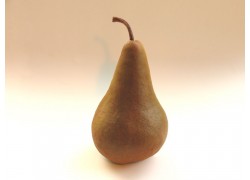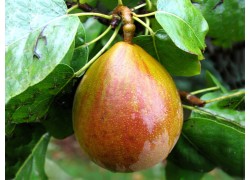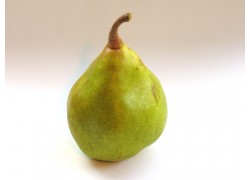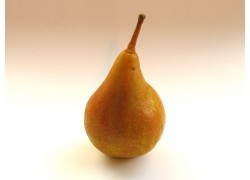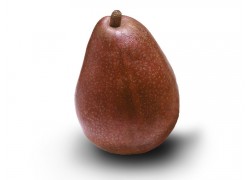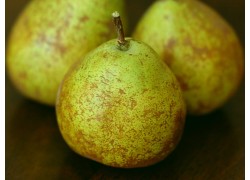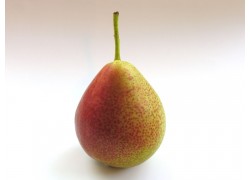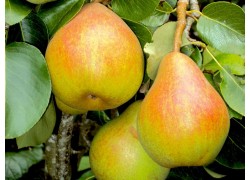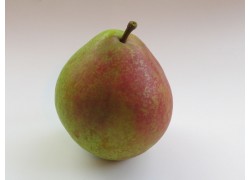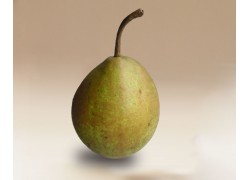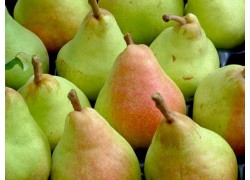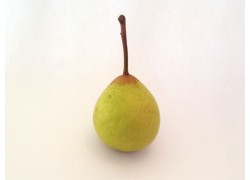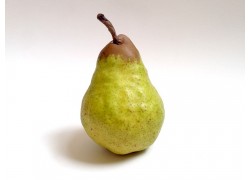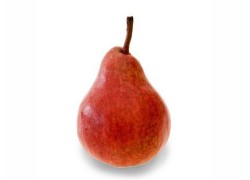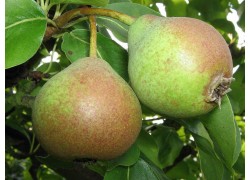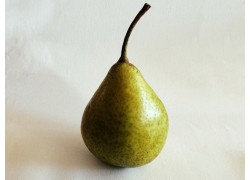No products
Filter
Pear trees on DWARFING rootstocks. Dwarfing forms allow these pears to bear much earlier and make more manageable trees than the huge old pear trees seen on old farms. "Pears for your heirs" was the old adage pointing to their longevity, slowness of growth and bearing, and eventual large sized tree. The French (and Belgians) have been responsibl...
Pear trees on DWARFING rootstocks. Dwarfing forms allow these pears to bear much earlier and make more manageable trees than the huge old pear trees seen on old farms. "Pears for your heirs" was the old adage pointing to their longevity, slowness of growth and bearing, and eventual large sized tree. The French (and Belgians) have been responsible for bringing pear culture to it's peak in the 1700s.
Dwarf Pears There are 19 products.

Loading...
Williams
Ripens: February - MarchAn attractive large yellow pear. Juicy, tasty soft flesh and best eaten off the trees as it stores less well as other varieties. Is partially self fertile, but will crop better if near another variety of our pears.
$42.50Beurre Bosc
Ripens: MarchA well known pear - distinctly covered in a deep brown beautiful russet. It has a long shape, often with a gentle curve, and a rich creamy grainy flesh. Very high quality, lasts well, ripens late. Pollination by any other variety of our pears.
$32.50Beurre Hardy
Ripens: MarchThis late ripening pear originates in the Anjou region of France where many of our best pears come from. It's a medium sized roundish pear with a deep orangy brown skin with a fair amount of russet. The yellowish-white flesh is fine, juicy, and of excellent flavour. Bears heavily and crops regularly. An instant favourite! Cooks well. Pollination by any...
$42.50Beurre Superfin
Ripens: MarchThis little-know pear is a delight to eat. Medium sized fruit, with crisp firm flesh, pleasant light-green skin and a classic pear shape. Very juicy, but not over sweet. An instant favourite. Pollination by any other variety of our pears.
$32.50Conference
Ripens: March - AprilThe most popular commercial variety in UK, but uncommon in Australia. Long thin green fruits with some russet, delicate melting flesh when allowed to ripen properly. The key is to pick them when they are still firm and then ripen them on a window sill for 3-4 weeks. Ripen mid season, late March. Keeps well if put into a cool place.
$32.50Durondeau
Ripens: February - MarchA reddish brown pear with skin covered in a soft russet all over. A classic pear shape. A high quality fruit eaten fresh - just a stunning flavour and texture. Leaves turn attractive red in the autumn when the fruit ripen. Originated in Belgium 1811. Pollination by any other variety of our pears.
$42.50Beurre D'Anjou
Ripens: AprilThis late ripening pear originates in the Anjou region of France where many of our best pears come from. It's a medium sized longish shaped pear with a deep reddish-purplish skin and prominent russet patches. Quite stunning to see them hang amongst the green leaves. It has yellowish white juicy flesh thats highly flavoured, and bears heavily and regularly.
$42.50Bonne De Maline
Ripens: March - AprilA pear originating in Belgium in the 1820's, also known as Winter Nellis. Bears smallish rounded fruit, greenish brown with a slightly russeted skin. A fine rich buttery juicy yellowish flesh, with lovely flavour. Keeps well, ripens late. Pollination by any other variety of our pears.
$42.50Corella
Ripens: AprilAn attractive pear, yellow skin with an orange / red blush on the sunny side. Firm flesh, sweet and juicy. Stores well. Suitable for fairly low chill conditions. Pollination by any other variety of our pears.
$42.50Doyenne Du Comice
Ripens: AprilThis translates as 'Best on the market' and it really lives up to that name - on of the most wonderful pears that we sell. From France in the 1850's. Skin greenish yellow with an orange cheek when ripe. Medium to large fruit, slightly knobbly and perhaps a little russet and a long stem. Matures fairly late. Pollination by any other variety of our pears.
$42.50Flemish Beauty
Ripens: MarchA Belgian pear from the 1820's. Rounding shape with green almost speckled skin developing an attractive red/ pink blush on the sunny side. Flesh white, firm, grained and juicy, with a great flavour. Is partially self fertile, but will crop better if near another variety of our pears.
$42.50Josephine
Ripens: April - MayA smaller pear with a unique melting soft flesh beneath a fine glossy light green skin covered in a little russet. Memorable texture once tasted! From Belgium 1830, late maturing. Pollination by any other variety of our pears.
$42.50Winter Cole
Ripens: AprilA seedling from Bonne de Malines (Winter Nelis) raised by JC Cole in Richmond Victoria in 1880s. Smaller green partially russeted fruit. Tender sweet juicy flesh with good flavour. Ripens later in the season, can store well. Pollination is from another one of our pears.
$42.50Glou Morceau
Ripens: AprilA small to medium pear, with a delightful light melting flesh, juicy and fine. The skin is light green in colour without russet with a little orange blush on the sunny side, but no russett. Reliable cropper. Also called Beurre d'Hardenpont after a Belgian priest around 1750, and earned the name Glou Morceau (translates Dainty Morsel) on it's way to...
$32.50Dearbourne's Seedling
Ripens: February - MarchA smallish pear with a classic pear shape, light green to pale yellow with tiny russet dots when ripe. Tends to bear early and quite prolificly. Flesh is high quality, smooth sweet and juicy. Unknown origin. Also called Dearborn Seedling. Pollination by any other variety of our pears.
$42.50Packham's Triumph
Ripens: MarchAn Australian bred pear from NSW 1896, the Packham has been grown widely accross Australia as an all-purpose pear - good eaten, cooked and stored. Green skin turning yellowish after picking, the shape sometimes a little bumpy. Flesh excellent, sweet juicy. It handles well and keeps on the shelf and in storage.
$42.50Red Williams
Ripens: February - MarchAn attractive large red pear. Juicy, tasty soft flesh and best eaten off the trees as it stores less well as other varieties. Is partially self fertile, but will crop better if near another variety of our pears. A red form of the well known William Bon Chretien pear.
$42.50Moorcroft
Ripens: March - AprilA medium sized green pear with a little russet. Good for making perry, with medium acid and medium tannin. Mid-late season.
$42.50Fondante De Boris
Ripens: March - AprilA good early to midseason pear, beautiful looking fruit, tender, juicy and light flavoured. Can be picked early. Also called Fondante des Bois
$42.50


